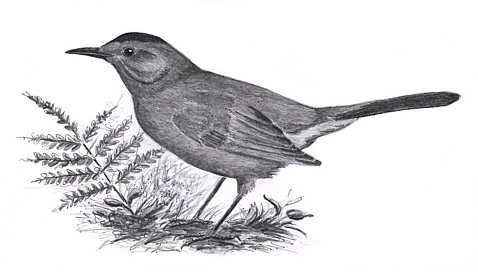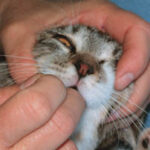Catbirds, often recognized by their distinctive “meow” call, are delightful visitors to any backyard. If you’re curious about these fascinating birds and want to encourage them to frequent your garden, you’re in the right place. Let’s explore the world of catbirds and discover how to make your backyard a haven for these charming avian neighbors.
What Exactly Are Catbirds?
The bird in question is the Gray Catbird, the most common catbird species in North America. While there are a few species globally, the Gray Catbird is the one you’re most likely to encounter in your backyard across the continent. Known scientifically, Dumetella carolinensis, these birds are celebrated for their mimicking abilities, similar to mockingbirds. However, unlike the melodious, repetitive songs of mockingbirds, a catbird’s song is more of an eclectic mix. Imagine a jumble of chirps, squeaks, and whistles – within this medley, you’ll often hear the characteristic “meow” sound that lends the bird its name. It’s a fitting, if somewhat ironic, moniker for such an intriguing creature.
Identifying Gray Catbirds
 A Gray Catbird perched on a branch, showcasing its sleek gray plumage and black cap, while looking inquisitively to the side.
A Gray Catbird perched on a branch, showcasing its sleek gray plumage and black cap, while looking inquisitively to the side.
Catbirds are sleek birds, about the size of an oriole, though less vibrant in color. The name “Gray Catbird” is quite accurate in describing their appearance. They are predominantly gray, save for a noticeable black cap on their head and a chestnut-colored patch located beneath their tail. Interestingly, both male and female catbirds sport identical plumage, making them visually indistinguishable. This uniform gray attire contributes to their understated elegance in the bird world.
Catbird Behavior and Habitat
Unlike some skittish songbirds that prefer dense forests, catbirds favor more open habitats. They thrive in forest edges, hedgerows, and areas where forests meet open spaces. This preference for fragmented forests often brings them into closer proximity with humans, as human activity tends to create these very environments. Catbirds are known for their seemingly curious and unafraid demeanor around people. They often approach humans with an air of inquisitiveness, appearing interested in our activities and softly chirping as if in conversation, seemingly surprised when we don’t respond in kind.
Attracting Catbirds to Your Backyard
If you’re hoping to attract catbirds to your yard, you’re in luck – they have a diverse palate and are relatively easy to please. Like orioles, catbirds have a sweet tooth and are particularly fond of fruits.
- Fruits and Berries: Blueberries are a favorite, and planting blueberry bushes can be a great way to attract them, though you might have to share your harvest! They also enjoy other berries and soft fruits available in your garden.
- Grape Jelly and Oranges: Just like orioles, catbirds are attracted to grape jelly and oranges. Offering these in platform feeders can be a sweet treat for them.
- Raisins: Dried raisins are particularly irresistible to catbirds. A dish of raisins, especially soaked to soften them, can be a highly effective way to draw them in.
- Water: Water is crucial for catbirds, not only for drinking but also for bathing. A bird bath in your yard will be greatly appreciated, particularly when offering dried foods like raisins.
Catbirds are migratory birds, spending their summers in North America and then heading to Central America for the winter. Enjoy their presence during the warmer months and by providing the right food and water sources, you can create a welcoming environment that encourages them to return year after year. Just remember to avoid any prune-related incidents that might upset your neighbors! By offering a mix of fruits, raisins, and fresh water, you’ll likely find yourself charmed by these unique and engaging birds all summer long.

